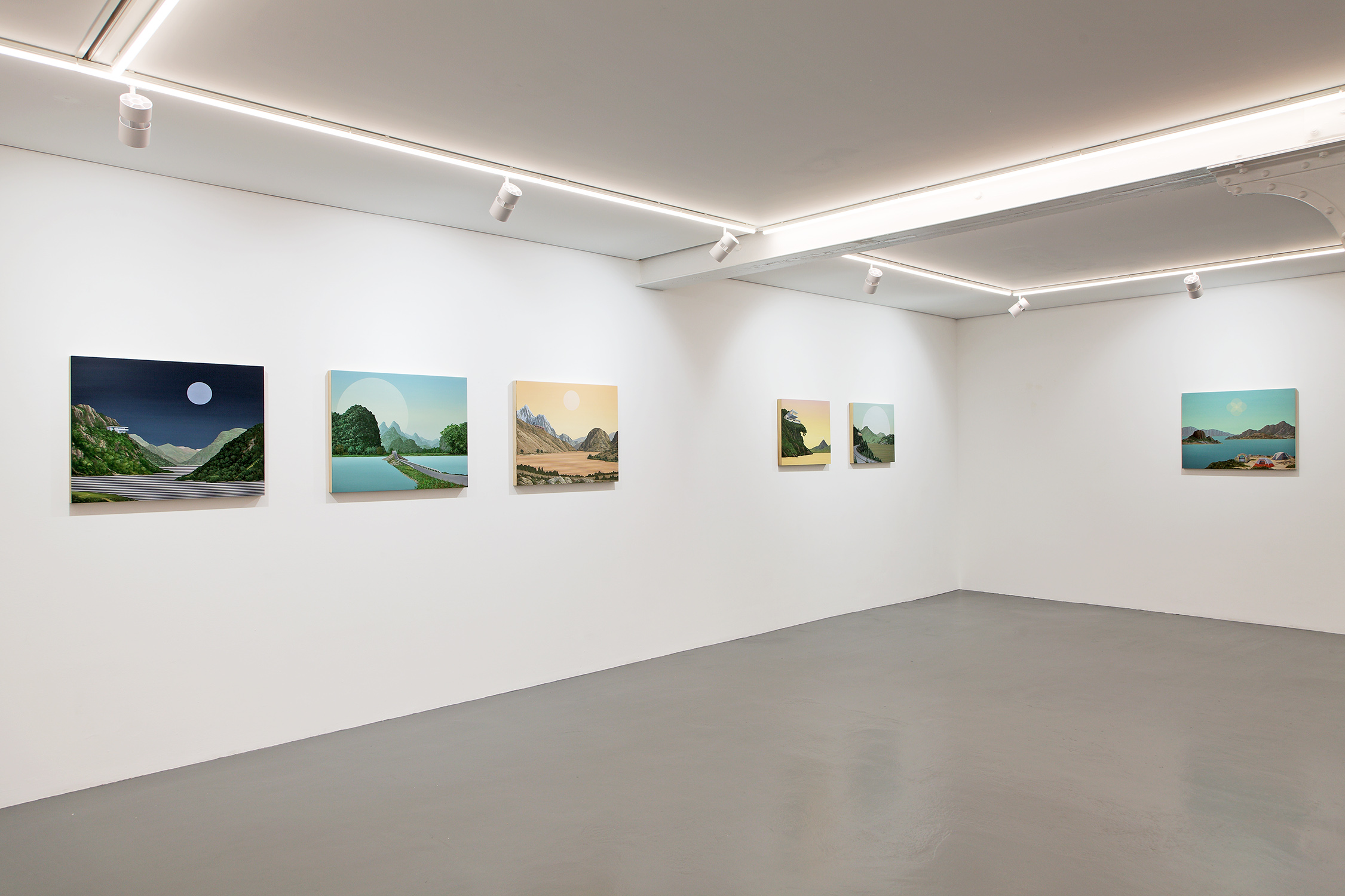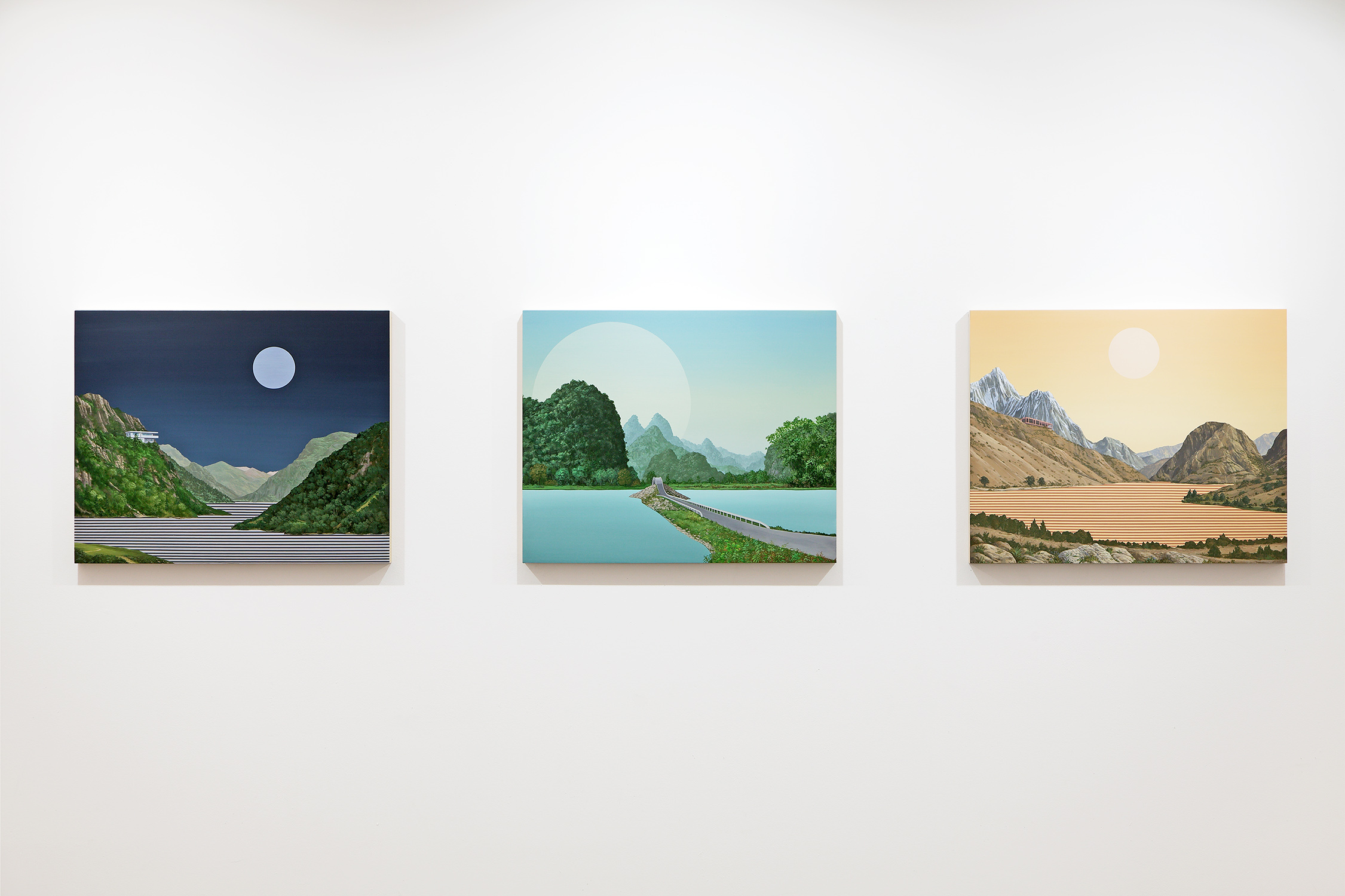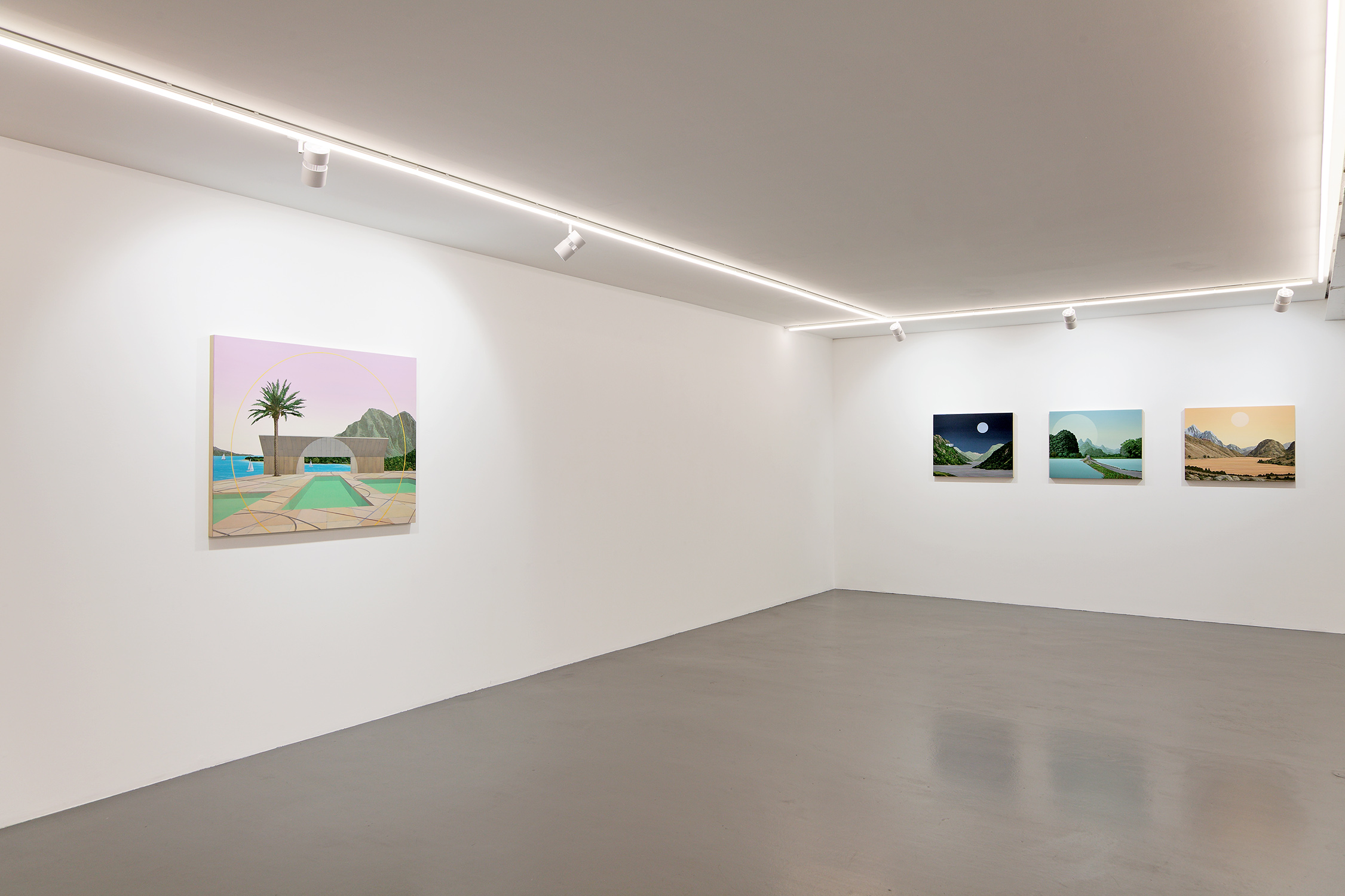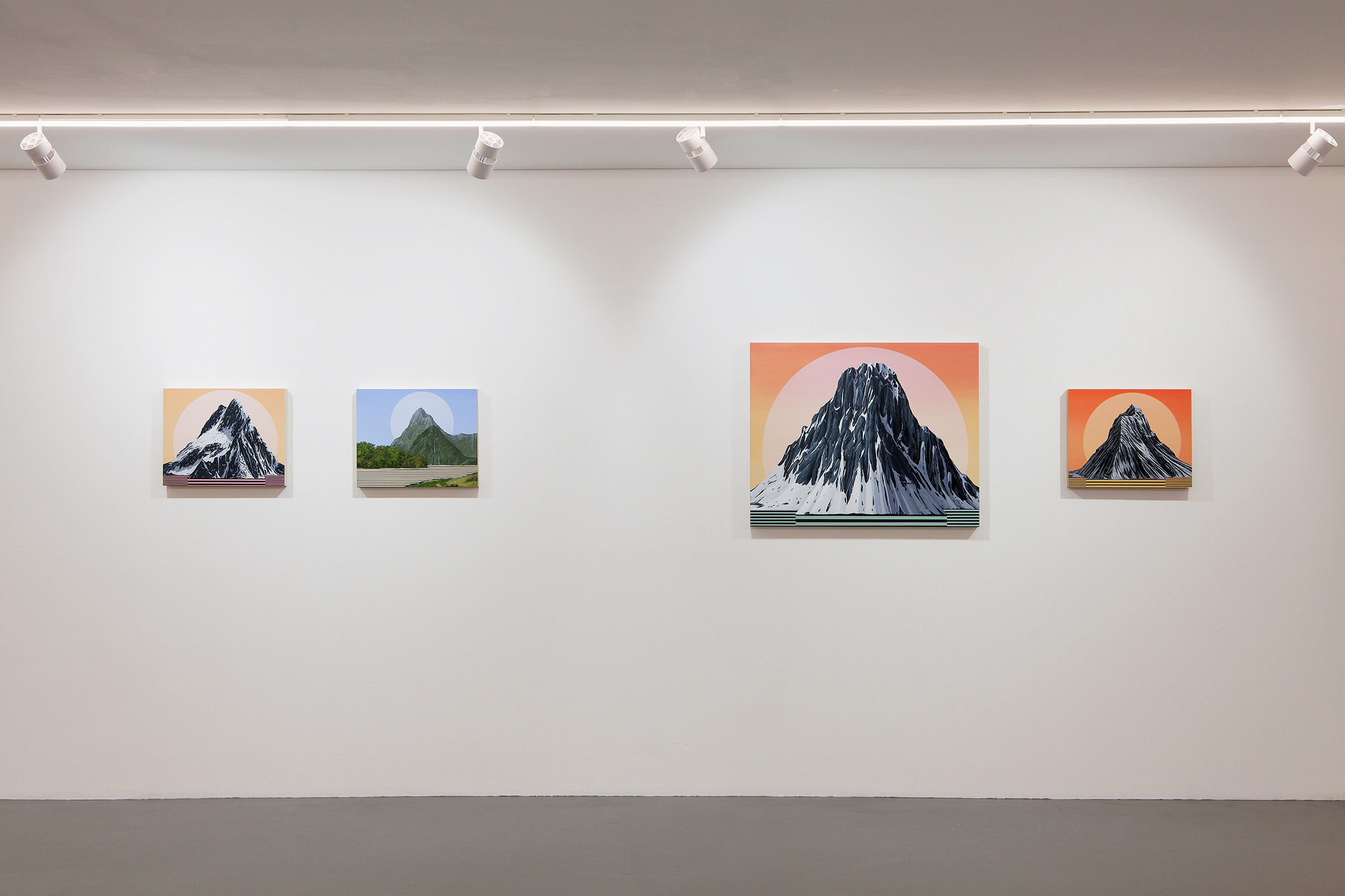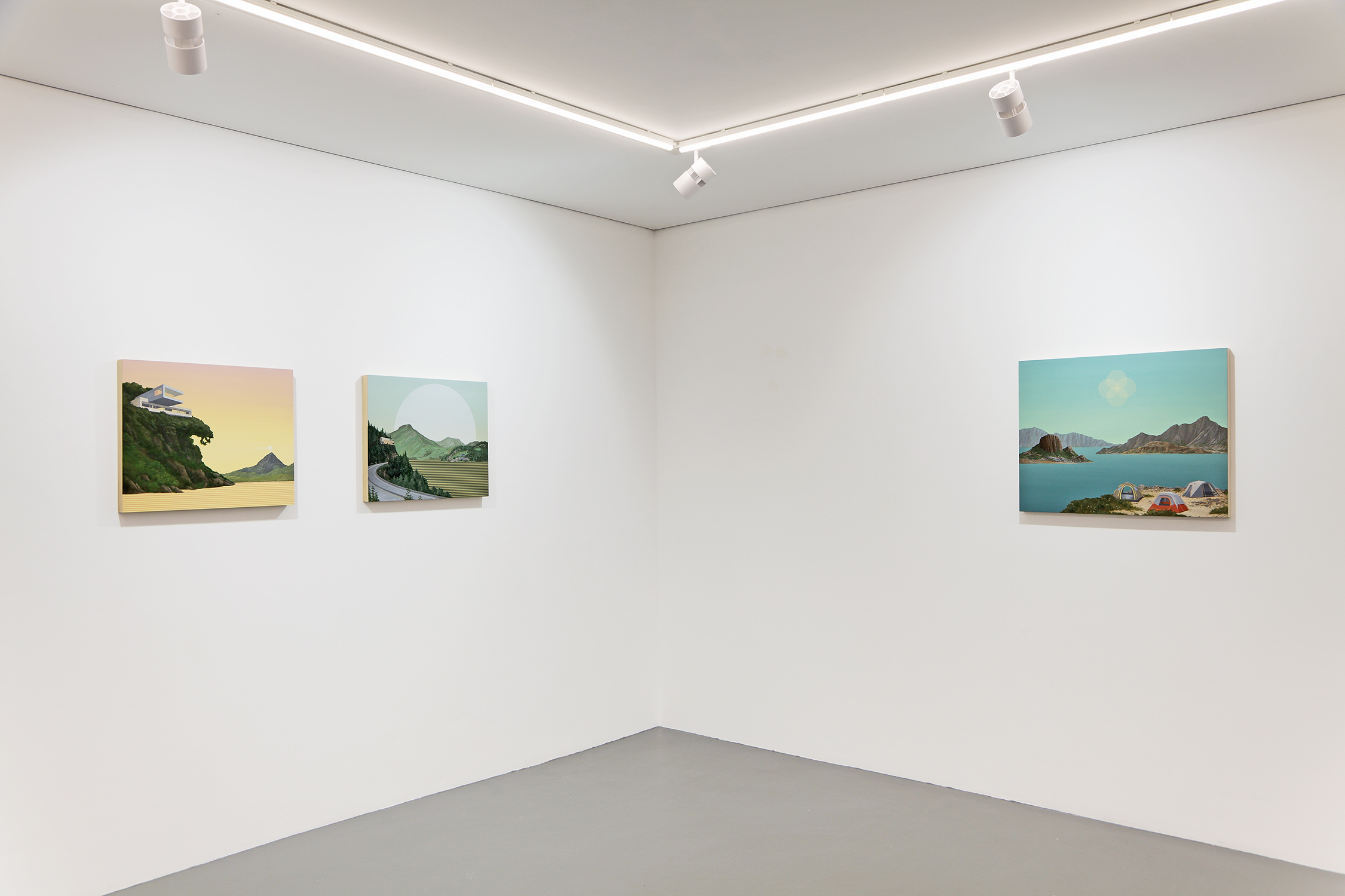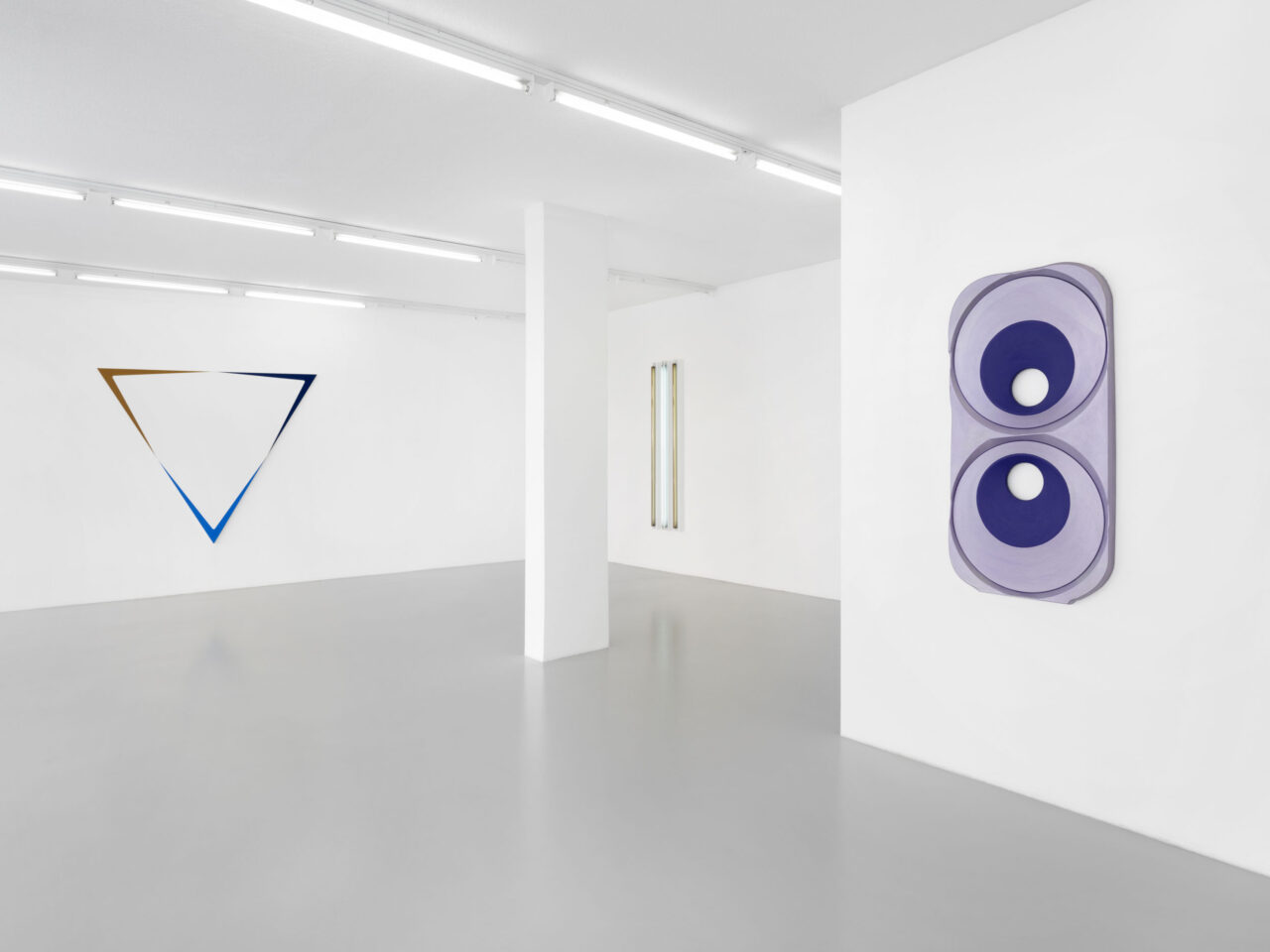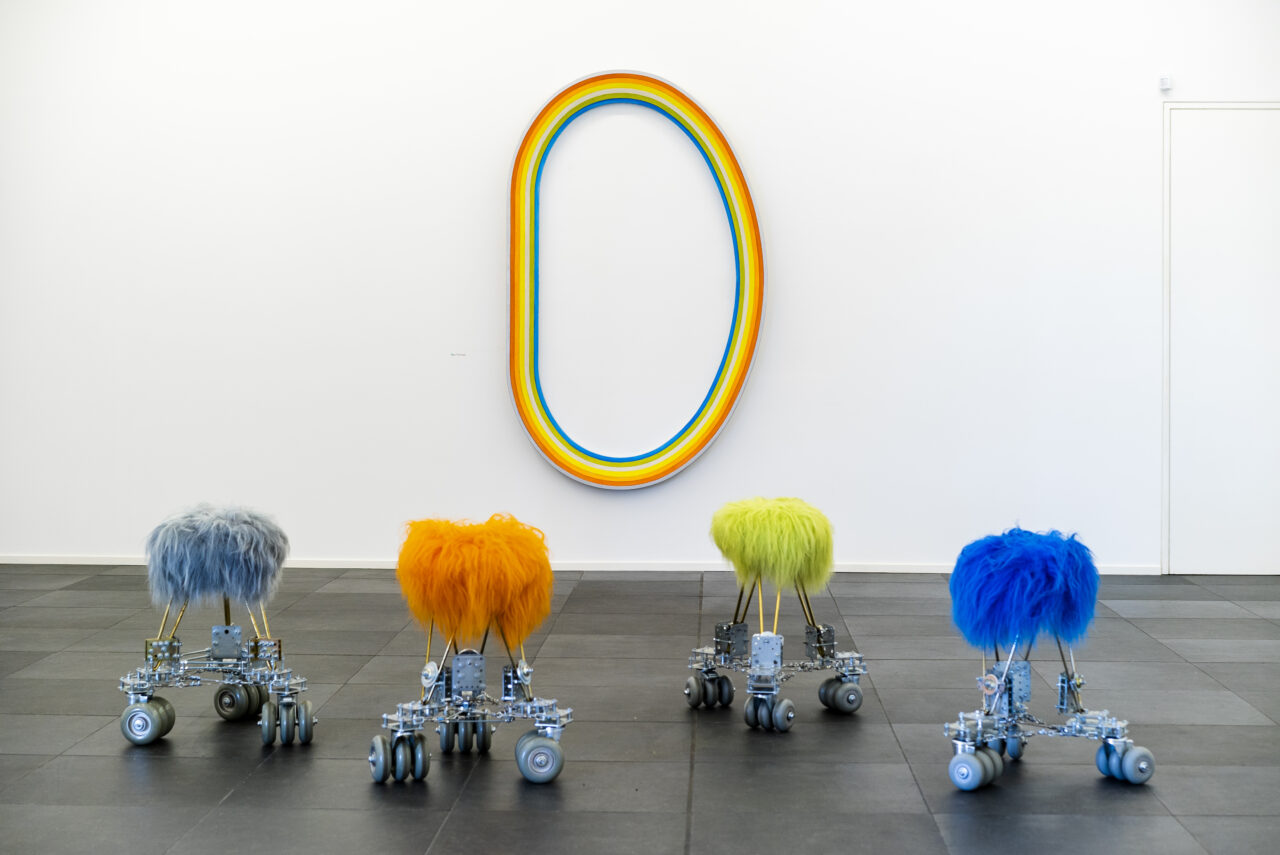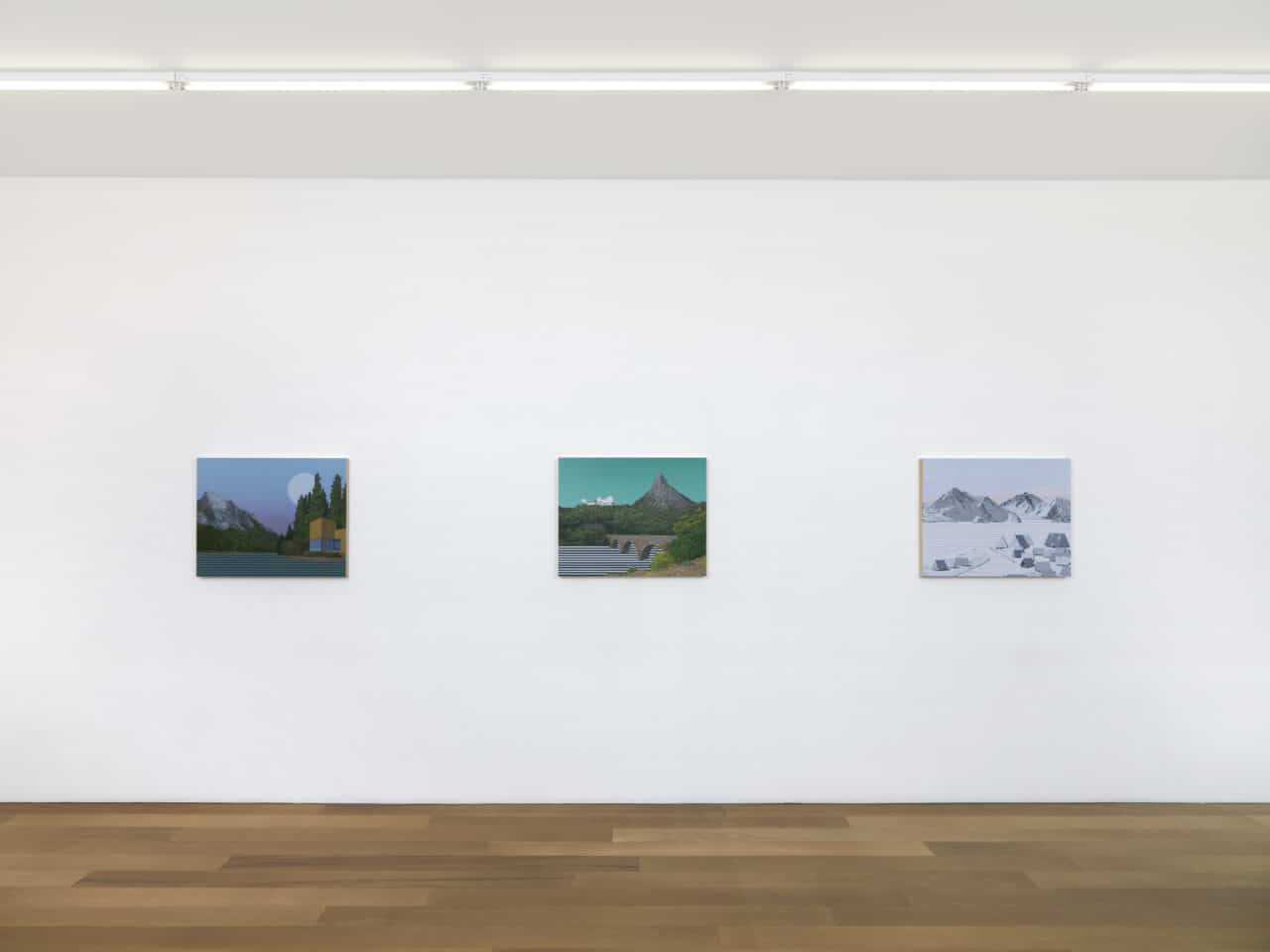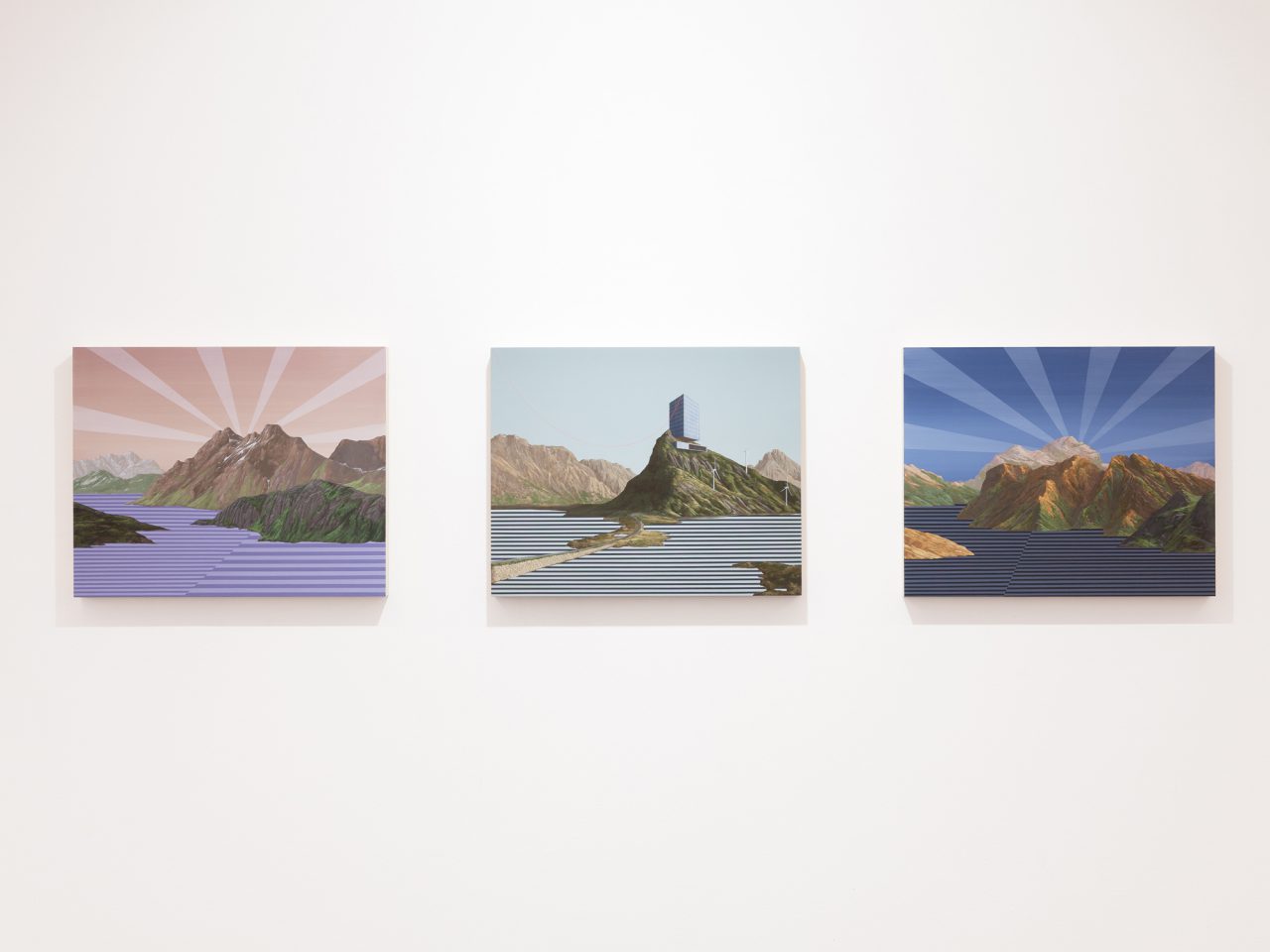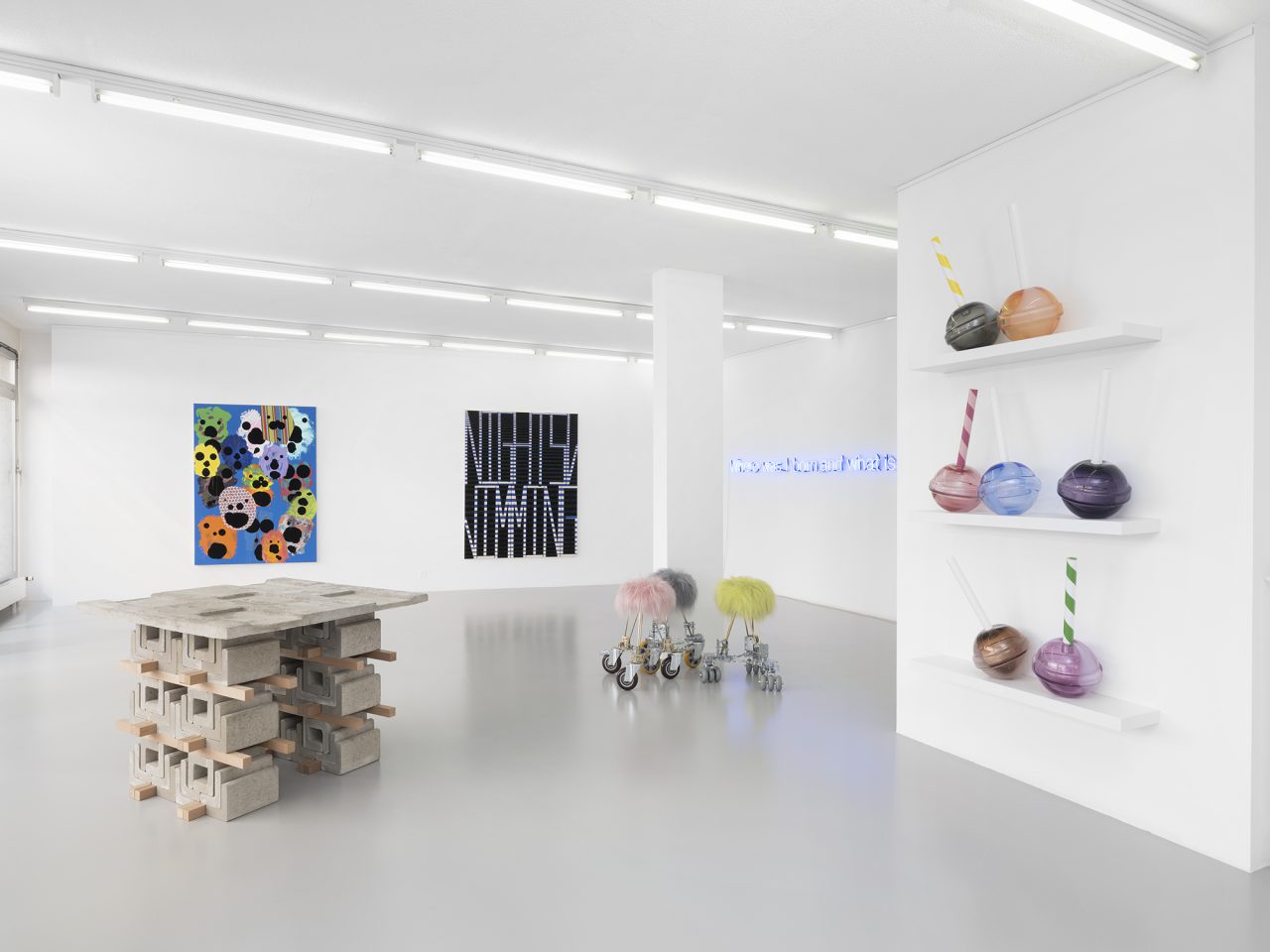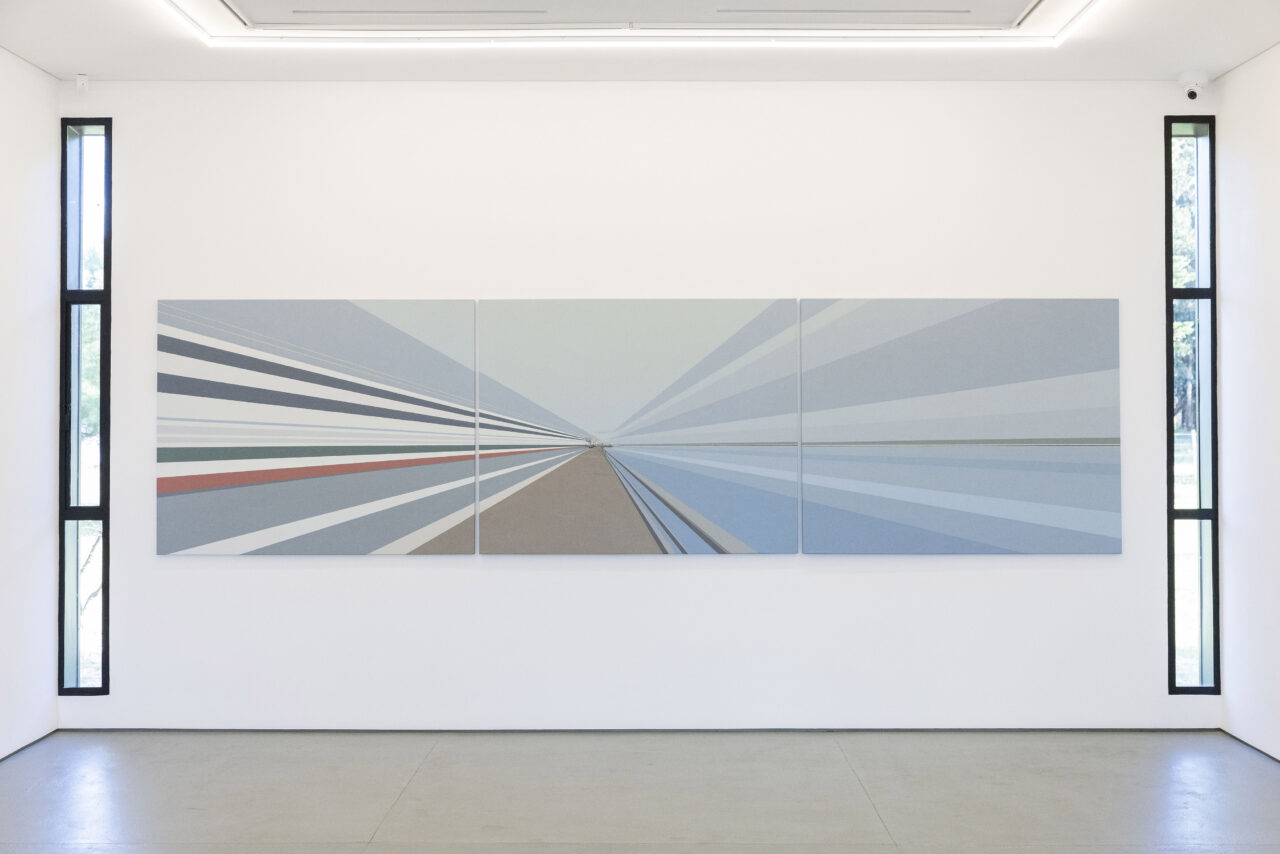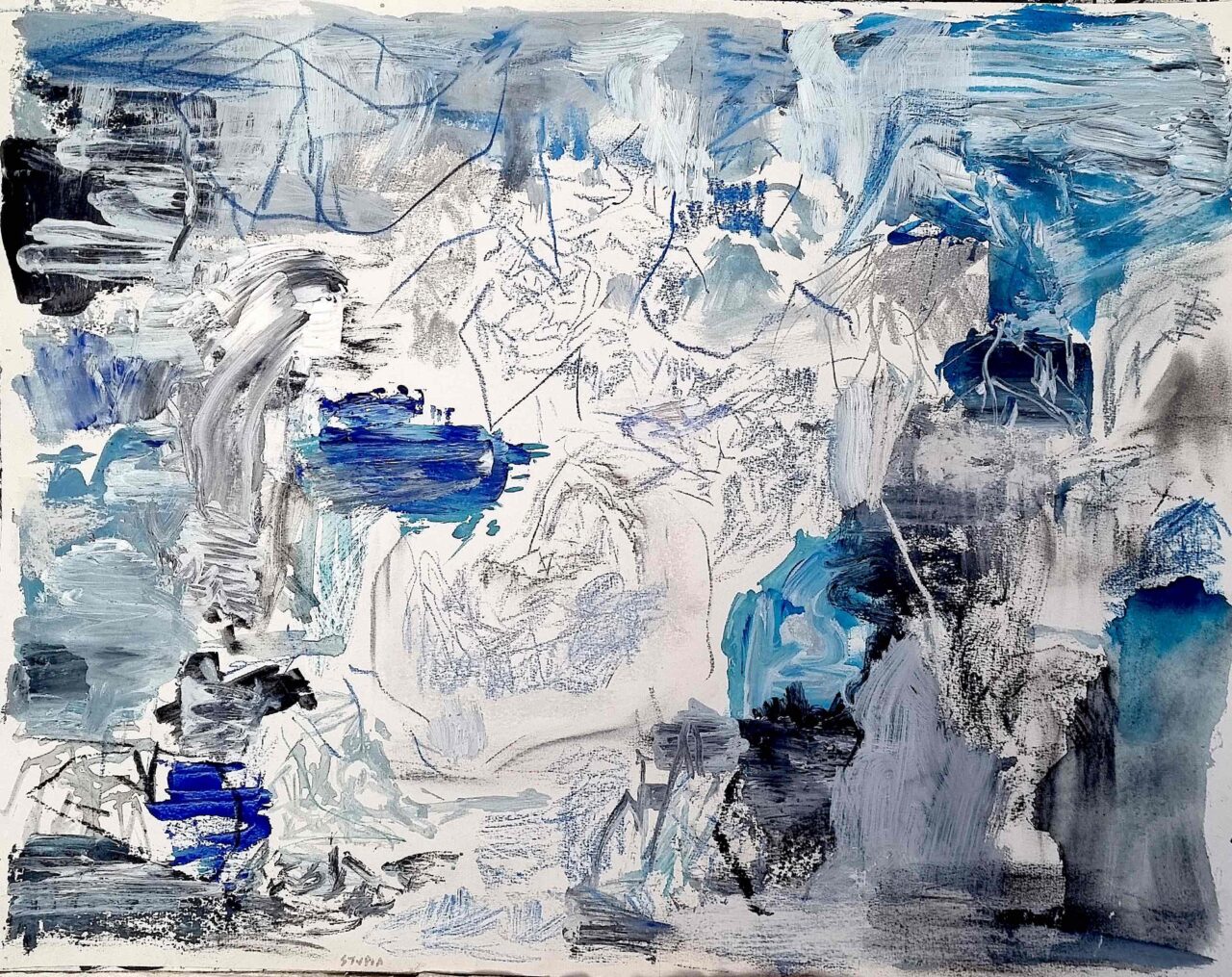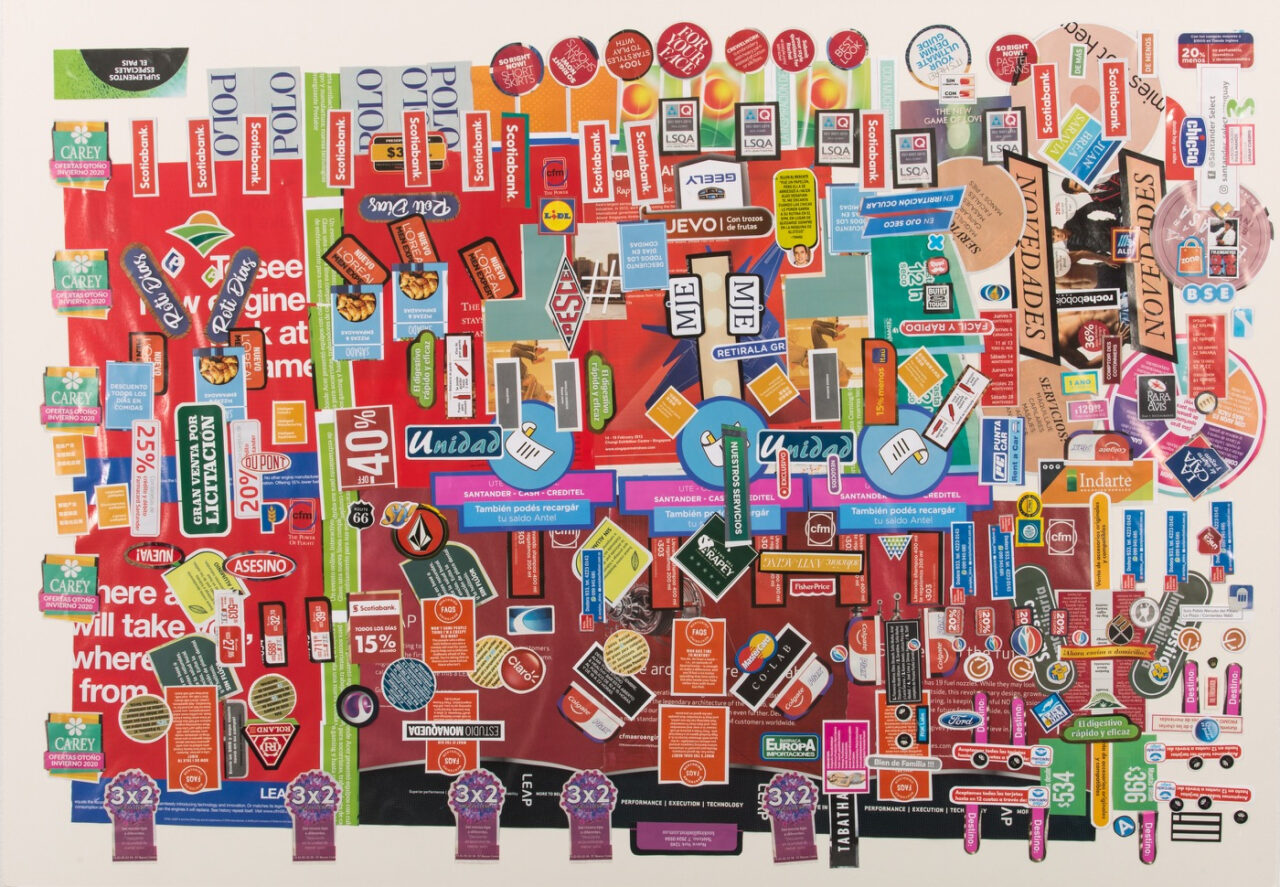Dean Monogenis – The Other Way
Dean Monogenis
The Other Way
26.04.25 → 07.06.25
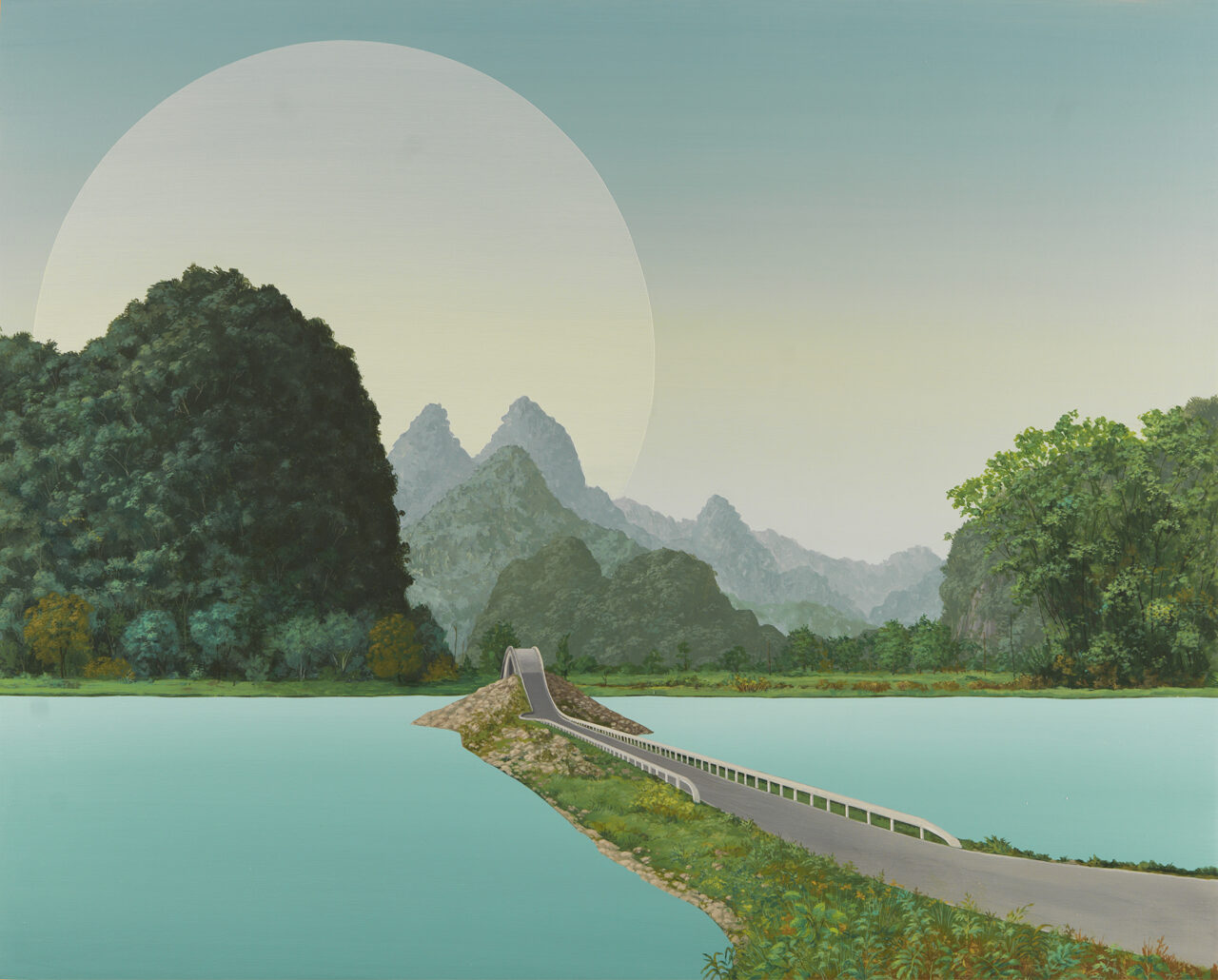
Opening and book signing
Saturday April 26, from 3 to 8 pm
Xippas is pleased to present the third solo exhibition of American painter Dean Monogenis in its Paris space.
The exhibition will bring together a selection of new paintings created over the past year and will open with the presentation of the artist’s new monograph Higher Ground, on the occasion of the opening reception.
Fictional Reality Zone
“As soon as humans appear, everything begins to change.” This phrase, uttered by one of the protagonists of Andrei Tarkovsky’s film Stalker, could be applied to the painted landscapes of Dean Monogenis. Large mountain panoramas bordered by clear lakes whose hypnotic shimmer is treated with a condensation of colored bands that introduce, into the immensity of nature, an artificial geometric composition. The artist plays with the resurgence of a Donald Judd-style colorful minimalism in the depths of classical landscapes, responding to the Albertian perspective. The infiltration of this cohabitation of styles questions the status of the image: reality or simulation, mental construction? Disturbance sets in. The window opened by the painter becomes a zone of “fictional reality” to be explored. Indeed, if everything on the surface seems to adhere to a realism “of the already seen,” the gaze tirelessly loses itself in the mystery of the unknown. And the sparing integration of human presence, suggested only by a few architectural elements – modernist houses perched on the side of a rocky peak or campers’ tents pitched at the water’s edge – reinforces the illustration of the solitary pilgrimage.
But these familiar clues also have the power to imperceptibly change our view of nature. If the sublime snow-capped mountains embody our desire to escape into wild environments, they also raise the question of the impact of man on this idyllic postcard. Doesn’t the work The Ability to Forget (2024), with its explicit title, evoke this feeling of losing something precious, even vital? A tiny pyramidal structure overlooks a large river dam while gazing in placid wonder at the innocent beauty of the water flowing from the mountain. How has the hand of man changed the contours of the landscapes? A return to nature, desired by the environmental struggle for rediscovering an ideal life, unpolluted and unindustrialized, is it possible? “If we look more closely, these scenes are also a reference to our temporality and the uncertainty of what we will find in this perfect place,” the artist emphasizes.
This quest is driven by a fascination with the figure of the adventurer, whose silhouette remains unseen yet is embodied by winding paths, improbably traced and cast forth to conquer dense, steep massifs, which are poetically embodied in the work Aventurine (2024). More than mere side roads, these are above all initiatory paths, shrouded in mystery, in sunsets with Californian colors. If Ritual (2023) evokes the vibrant palettes of David Hockney, Idle on the Precipice (2023) immerses us in a deep orange glow. The artist says his passion for architecture — structures he likens to sentinels perched atop dizzying peaks — was born in 2001, following the fall of the Twin Towers on September 11: “This event was so shocking that it immediately changed everything around me. It made me see architecture for the first time.” However, in this new series, architecture is a little less present. No more buildings under construction, no cranes towering overhead. The ideal takes precedence over the tangible. And the images transform into an allegory of nostalgic beauty, marked by a foretold disappearance. This is exemplified in the work The Calling (2024), where an immense snow-streaked mountain stands beneath an enormous moon. The call of nature, of course, like a prayer, is a religious invocation. Here, the narrative gives way to the spiritual. The artist’s mountain, while it refers to the world of Hollywood fiction through its uncanny resemblance to the Paramount Channel logo, is nonetheless an evocation of the writer René Daumal’s Mount Analogue, a novel the painter cites in his personal library. A mystical mountain, a sacred refuge. Dean Monogenis, like his silent architectures, stands on the dizzying path between the exterior journey and the interior path. And here, alongside the artist, we step into travel narratives elevated by literature and cinema. The painter would be like Caspar David Friedrich’s Wanderer Above the Sea of Fog. “ This series seeks to depict an ideal or utopia, while acknowledging that romantic visions of a natural paradise like Arcadia are inevitably shaped by contemporary reality. There is still adventure and the human need to travel and explore. I want this and I want to create paintings about it. But precisely because it’s 2025, I have to include elements that suggest the limits of this dream,” he explains. The mountain motif thus serves as a renewed approach to landscape painting, reflecting contemporary concerns—spiritual, political, and ecological—while delicately balancing themes of rebirth and eschatological beliefs. “Landscape painting is and always has been a means of transportation. And we need it. We need to feel that we can travel, even briefly, or virtually, simply by sitting and looking at an image.” Thus, Dean Monogenis meticulously invents the contemporary “capriccio.”
Julie Chaizemartin,
journalist and art critic
Exhibition views
-
![Dean Monogenis Xippas Paris 2025 05]()
Dean Monogenis
The Other Way, Exhibition view, Xippas Paris, 2025 -
![Dean Monogenis Xippas Paris 2025 06]()
Dean Monogenis
The Other Way, Exhibition view, Xippas Paris, 2025 -
![Dean Monogenis Xippas Paris 2025 10]()
Dean Monogenis
The Other Way, Exhibition view, Xippas Paris, 2025 -
![Dean Monogenis Xippas Paris 2025 11]()
Dean Monogenis
The Other Way, Exhibition view, Xippas Paris, 2025 -
![Dean Monogenis Xippas Paris 2025 08]()
Dean Monogenis
The Other Way, Exhibition view, Xippas Paris, 2025 -
![Dean Monogenis Xippas Paris 2025 17]()
Dean Monogenis
The Other Way, Exhibition view, Xippas Paris, 2025
